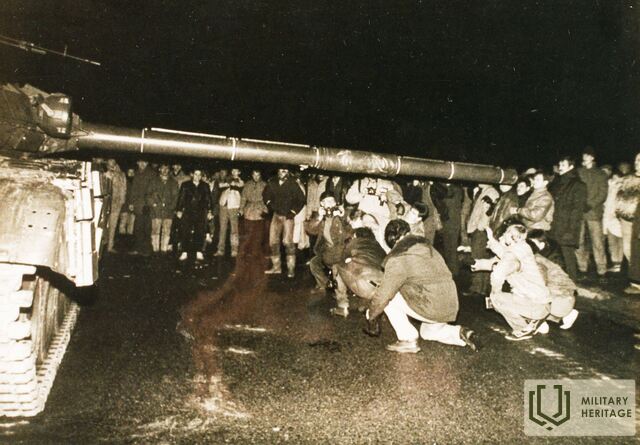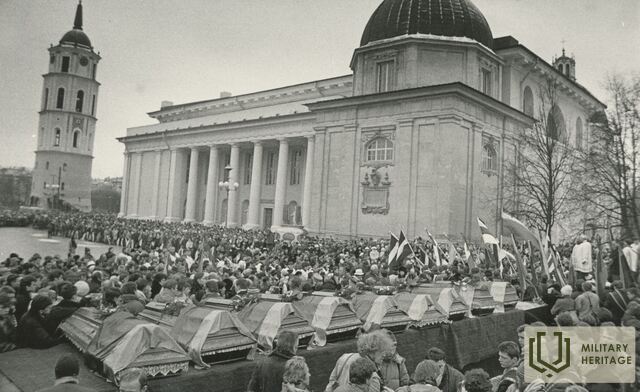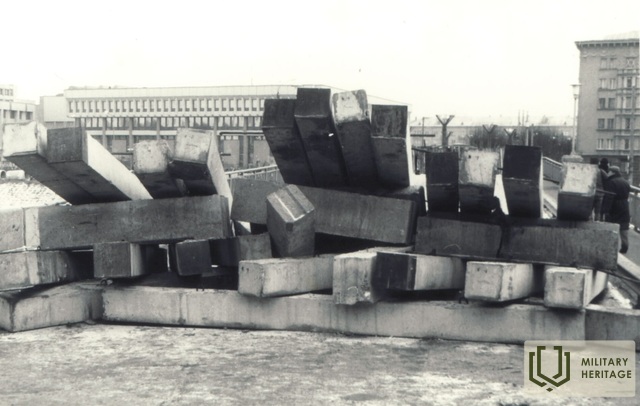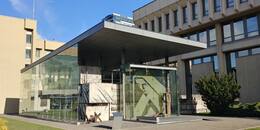Soviet aggression: the events of January 1991 and their witnesses
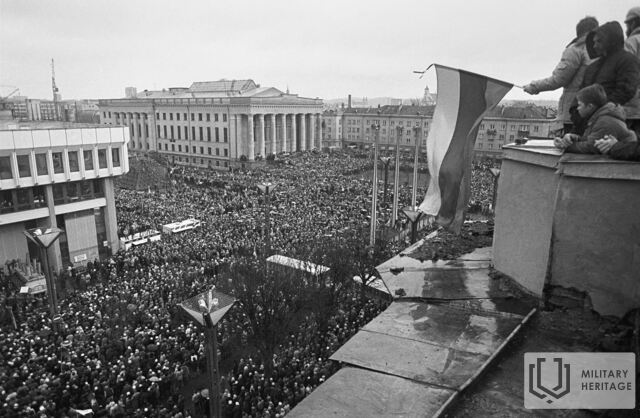
Lithuania had to fight for its Independence, which was restored on March 11, 1990. There was unarmed resistance, but the Soviet occupiers and aggressors used the army, firearms and tanks against the unarmed. In January 1991, the Soviet leadership and army began to implement a plan aimed at destroying Lithuania's Independence. A coup d'état was launched. The Lithuanian people resisted the Soviet empire.
On March 11, 1990, when Lithuania declared the restoration of its independent state, the Soviets did not hesitate - they resorted to demands and aggression. The army was also used for this. The will of the Lithuanian people was tried to be broken in various ways. On April 13, the leadership of the Soviet Union issued an ultimatum to Lithuania, demanding that it revoke the March 11 act within two days. When it did not comply, on April 18, the USSR began an economic blockade of Lithuania. The blockade lasted 75 days, until July 1, 1990.
Another wave of aggression began in early 1991. The pretext for it was the increase in food prices announced by the Lithuanian government.
On January 8, the pro-Soviet organization Jedinstvo gathered about 20,000 people near the Supreme Council of the Republic of Lithuania. The crowd and disguised Soviet soldiers began to rush into the Supreme Council, but were stopped by the palace guards and the hastily assembled residents of Vilnius.
On January 10, the Soviet leadership demanded that the constitutions of the USSR and the LSSR be immediately restored in Lithuania, thus annulling the March 11 act.
On January 11, Soviet paratroopers, accompanied by tanks and armored vehicles, occupied the Lithuanian National Defense Department and the Press House. It was then that weapons were used against unarmed guards of the facilities for the first time.
The Lithuanian Reorganization Movement began organizing nonviolent resistance to the occupiers and called on people to gather and stand guard at the most important state facilities. Tens of thousands of people from all over Lithuania gathered in Vilnius, surrounding the buildings of the Supreme Council, the Radio and Television Center, and the television tower with a human ring.
On the night of January 13, Soviet military units used tanks to forcefully seize the Lithuanian Radio and Television and the television tower, which were guarded by unarmed people. That night, 14 defenders of the tower were killed or later died in hospital from their injuries, and more than 600 people were wounded or injured. The dead were shot, crushed by tanks, or injured by explosive charges.
On the same day, even more people from all over Lithuania arrived in Vilnius, determined to preserve the Independence of Lithuania. With thousands of people standing guard at the Supreme Council building, and volunteers prepared for defense inside, the USSR leadership did not dare to storm it. The unarmed resistance of the Lithuanian people, the indignation in the USSR itself and in the world forced the Soviet leadership to abandon the plan to destroy the Independence of Lithuania.
January 13 is celebrated in Lithuania as Defenders of Freedom Day. Monuments have been erected in memory of those who died, and streets have been named after them. The January 13 Memorial was unveiled near the Seimas of the Republic of Lithuania.
Documentary films telling the story of the events of January 13, 1990, presenting testimonies and memories of their participants:
- Let's Die, That We May Live (1991, directed by Vytenis Imbrasas) / https://www.lrt.lt/mediateka/irasas/2000248406/zusim-kad-gyventume;
- Sunday Morning. January 13th in Kaunas (1991, screenplay by Vidas Mačiulis, dir. Bronius Talačka) / https://www.lrt.lt/mediateka/irasas/58847/dokumentinis-filmas-sekmadienio-ryta-sausio-13-oji-kaune ;
- January 13th (1995, dir. Bronius Talačka) / https://www.lrt.lt/mediateka/irasas/6020/dokumentinis-filmas-sausio-13-oji ;
- January 13th (2000, screenplay by Vytautas V. Landsbergis, directed by Ramunė Rakauskaitė, Donatas Ulvydas) / https://www.lrt.lt/mediateka/irasas/2000135094/dokumentinis-filmas-sausio-13-oji .
- Commemoration of the Day of the Defenders of Freedom , online access: https://www3.lrs.lt/pls/inter/sausio_13?p_k=2 .
- "Defense of Freedom in 1991", in: Seimas of the Republic of Lithuania , available online: https://www.lrs.lt/sip/portal.show?p_r=37311&p_k=2&p_kade_id=10 .
- Algis Kasperavičius, "January 13th", in: Lithuanian Encyclopedia , 2024, available online: https://www.vle.lt/straipsnis/sausio-tryliktoji/ .
Related objects
January 13th Memorial of the Seimas of the Republic of Lithuania
The monument is located in Vilnius, in front of the Second Palace of the Parliament (Seimas) of the Republic of Lithuania. In January 1991, the people of Lithuania surrounded the Par liament Palace with barricades, in a fight for and in defence of their freedom. It was an attempt to protect Lithuania from military aggression by the Soviet Union of the time – Soviet at tempts to stage a coup d’état in Lithuania and restore Soviet rule. Barricades surrounded the Parliament building until the end of 1992. In 1993, in front of the Palace of the Seimas of the Republic of Lithuania, a unique memorial was erected – made of parts of the barricades and other relics – it was dedicated to the Lithuanian people who sacrificed their lives for freedom. On 13 January 1991, tragic events unfolded, as the Soviet Army and special forces occupied the Lithuanian Radio and Televi sion Centre building and the television tower, killing 14 freedom fighters and injuring around 600 people. As the tenth anniversary of the Defenders of Freedom Day was approaching, a decision was made to preserve the composition by creating a memorial to 13 January. The Memorial was inaugurated in 2008. The memorial preserves an authentic fragment of the 1991 par liamentary barricades and has a chapel with an icon to the Blessed Virgin Mary. The memorial displays objects brought by people and provides an insight into the events that took place during the defence of the independence of Lithuania.




